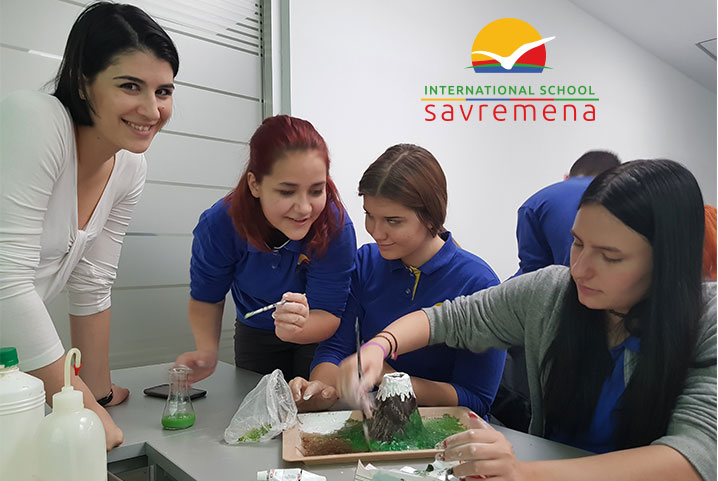
International School Savremena has always had innovative and creative teaching approaches and methods, so it is not rare that the teachers decide to teach together and combine different subjects to create fun lessons that will help their students acquire new knowledge faster and better.
This is exactly what happened on Thursday, 25 January, when biology teacher, Miss Nadežda Golubović, and geography teacher, Mr Vladimir Milošević held an interdisciplinary lesson together, and brought the phenomenon of volcanoes even closer to Year 10 students. One of the Earth’s most dangerous natural disasters, volcanoes are the result of tectonic plates movement, a term which is well-known to Savremena’s young geographers.
However, understanding of the processes that occur in magma and the impacts on the environment would not be complete without prior biology knowledge. This is how Savremena’s truly different teachers got the idea to join their study groups and create a lesson that everybody would enjoy.
Students making their own volcanoes
After a brief introduction to tectonic movements, types of volcanoes, types of magma and the impact on the environment, the students were given a special task - to make their own volcanoes using the material the teachers had provided. Each group of five was assigned a different volcano to make, using clay to cover a flask, so that the inside of the flask would serve as the inside of the volcano. After construction, the students painted the sides of their volcanoes applying the knowledge about the ecosystem their volcano belonged to.
This task not only helped the students revise their knowledge of different types of volcanoes, but it also proved that there were a lot of talented painters in the groups. As a result, they created two acidic lava volcanoes, two ash volcanoes and one basaltic lava volcano, and proved they really did know the difference between them.
Understanding how eruptions happen
When the painting was over, the students couldn’t wait to put lab coats and gloves on and get ready for making their volcanoes erupt by mixing different substances in the correct ratio, demonstrating different types of lava and volcanic explosions.
Following the lesson, Year 10 students were thrilled to share their impressions about one of the most interesting lessons they had ever had, but they also admitted that this lesson showed them how sciences can be connected, making them develop both practical and analytical skills in a more efficient way.
This exactly is the reason why International School Savremena organises interdisciplinary and topic-based lessons like this one, in order to facilitate learning and make sure that its students acquire new knowledge while still having fun.


















